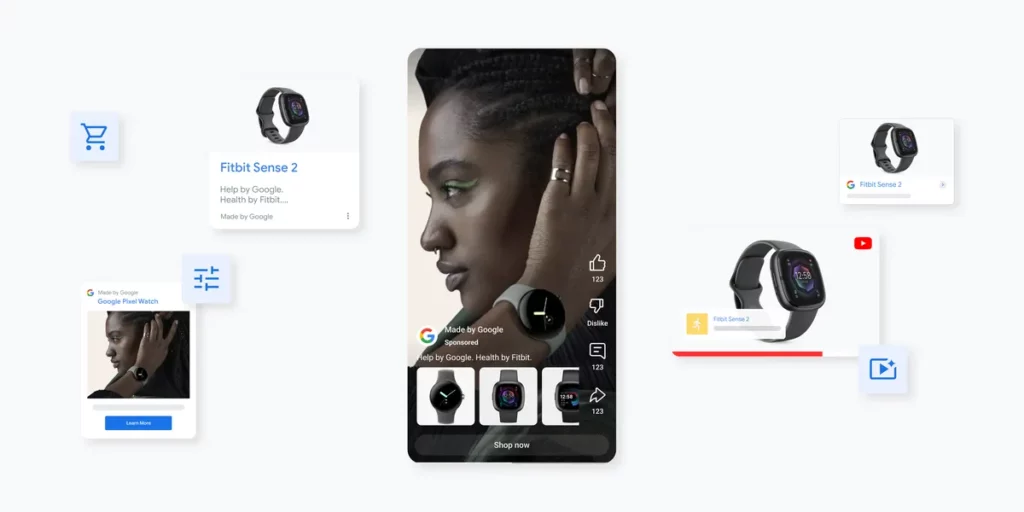In a digital landscape dominated by video, YouTube continues to outpace platforms like Instagram and Facebook in both reach and engagement, especially among younger audiences. While TikTok has gained significant traction in short-form content, YouTube stands apart with its unique combination of short and long-form video, deeper user engagement and multi-format versatility. This positions it as more than a content platform, it’s a discovery engine and a performance driver throughout the customer journey.
For marketers targeting Gen Z, YouTube’s influence is increasingly difficult to overlook. According to Google, 61% of Gen Z viewers feel closer to creators on YouTube than on any other platform, and they see the platform as a more meaningful use of their time. This connection translates into commercial performance. A Nielsen study found that YouTube delivers 2.3 times higher long-term return on ad spend (ROAS) than paid social channels.
To help brands capture this opportunity, Google launched Demand Gen campaigns in 2023. These campaigns are designed to engage users during the discovery phase, when they are not actively searching, but are open to inspiration. Running across YouTube, Discover, Gmail and the Google Display Network, Demand Gen connects brands with high-intent audiences using AI-driven targeting and immersive creative formats.
Now, a series of updates introduced in March enhances the Demand Gen offering further, giving marketers greater control, new creative tools and better cross-channel measurement.
Expanded Control Across Google Surfaces
Advertisers now have greater flexibility in determining where their Demand Gen campaigns appear. Google has rolled out global channel controls, allowing brands to select specific placements across YouTube, Discover and Gmail, including targeting YouTube Shorts directly. This gives advertisers the ability to fine-tune their media strategies based on audience preferences, content type or performance goals.
In a significant expansion, Demand Gen now also includes Google Display inventory. This opens up access to more than three million websites and apps, extending reach beyond Google-owned properties and covering over 90% of global internet users.
Although Google encourages advertisers to use the full breadth of available inventory to maximise results, the added controls offer the option to take a more curated approach when needed.
Creative Tools for Short-Form and Mobile-First Content
With video consumption increasingly shifting to mobile and short-form formats, Google has introduced new creative capabilities to help advertisers stay ahead. Demand Gen now supports vertical 9:16 image ads in YouTube Shorts, creating a more immersive, full-screen experience optimised for mobile viewing.
A new tool enables advertisers to generate shorter versions of their existing video assets at scale, making it easier to develop content for short-form environments without extensive manual editing.
Google has also improved the ad creation workflow within Demand Gen. Marketers can now apply video enhancements, manually adjust creative assets and share previews with stakeholders for quicker review cycles. These updates are designed to reduce friction in the creative process while supporting the growing demand for high-quality, platform-specific content.
Retail Features Supporting Online and In-Store Journeys
For retail advertisers, Google is introducing features that make it easier to connect product discovery with both online and in-store experiences. Product feeds are being rolled out across Demand Gen, allowing users to explore full product details within an ad without needing to leave the platform.
In addition, local offer capabilities now let advertisers show real-time product availability in nearby stores. Paired with omnichannel bidding strategies, brands can optimise campaigns for both eCommerce and physical store visits, driving performance across the full path to purchase.
Marks & Spencer is one of several retailers already seeing strong results. Working with Incubeta, their Demand Gen campaign exceeded forecasted ROAS by 186% and achieved a 66% lower cost per action, outperforming their paid social activity.
Improved Measurement and Platform Comparison
To give advertisers a clearer view of performance, Google is rolling out new reporting columns in Google Ads. These include view-through conversions, a metric commonly used in social media measurement, as well as tools to isolate Demand Gen results from other Google campaigns.
This improved visibility supports more accurate comparisons across platforms, enabling marketers to make better-informed decisions about media mix, budget allocation and campaign strategy.
Sunsetting Video Action Campaigns
As part of its platform consolidation, Google is phasing out Video Action Campaigns. From April, advertisers will no longer be able to create new campaigns of this type. Starting in July, Google will begin automatically upgrading existing campaigns to Demand Gen.
To maintain full control, advertisers are encouraged to upgrade manually using Google’s migration tool, available from March. This tool preserves historical settings and performance learnings, and ensures continuity as advertisers transition to the new campaign format. Initially, upgraded campaigns will continue to serve only on YouTube and video partners, until broader inventory settings are enabled.
With these updates, Google is positioning Demand Gen as its core solution for visual-first, performance-driven campaigns. The combination of flexible placement controls, stronger creative tools, and improved measurement makes it a compelling option for marketers looking to engage audiences in the moments that matter.




RECOMMENDED FOR YOU
LinkedIn Streamlines B2B Influencer Marketing
LinkedIn has introduced a more intuitive way for brands…
LinkedIn has introduced a more intuitive way for brands…
Meta Adds New AI Tools To Supercharge Lead Gen
Meta is rolling out a wave of updates to…
Meta is rolling out a wave of updates to…
Meta Uses AI Chats To Refine Ad Targeting
Meta has announced a major update to how it…
Meta has announced a major update to how it…